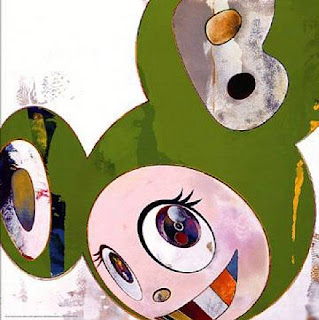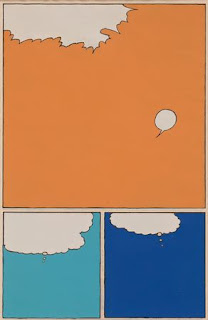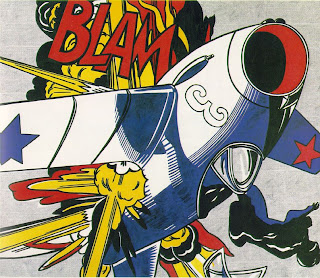The exhibition entitled Comic Abstraction opened at MoMA on March 4, and it is good to see this area of art getting more recognition. Naturally, when an institution such as this does anything, the message tends to resound unto the far reaches of the art world. So it is only natural that Art News would run an article on the show. Written by Peter Plagens under the name What's So Funny About Abstraction, it's helping to elevate artwork created under the influence of comics.
Plagens focuses on making a distinction between the tragic and comic traditions in abstract painting, serving up early modern styles as an example of the former. The latter, and more recent, continues to demonstrate its suitability for abstraction as it gains momentum. In the first paragraph of his article we are reminded that "the comics are a lot older than abstraction," with the first being published some two hundred and five years ago.
Comic abstraction in itself is not quite that new either. We have Lichtenstein's work as an early example of that, and that was over forty years ago unless there is something prior to it I'm not aware of. So why is it that a stigma is still being associated with paintings in this tradition? And why is it that the existence of such a separation seems to be stronger in the western world?
These are some of the questions raised by the MoMA exhibition. The online description for it reiterates that "in the United States and Europe comics have stood at the nexus of the high-low debate, while in Japan manga and anime have never been differentiated from art." Meanwhile, Plagens also declares that "comics and abstract painting share a common root." Being the effort to exclude certain details, while exaggerating others, in order to disclose the work's purpose.
It comes as no surprise to me that the lines between high art and the low-brow work of the "less elevated" are beginning to blur. To me, comic art and derivatives thereof represent all that is good and vibrant in art, without being diffused by the elitism of art establishments. How can artists not be influenced by the tsunami of work from Japan? How can we not be inspired by that which we see in ever greater numbers?
 My own effort in this veign of painting, Tears
My own effort in this veign of painting, Tearsalso on Minitokyo (link)
There is only one answer to those questions for me. The simple truth is that I, for one, can't. My only hope is that the momentum gained from MoMA's possible acceptance of what seems contrary to its nature, and Plagens' consequent written word, will retain its virility. I know that the chances are slim. Yet maybe this will bring about some change in the perception of the good people of the world. Maybe even generate more acceptance of this movement, if I can even call it that, among galleries.
Why not. Let's call it a movement. Now to come up with a name. A name that is all inclusive, and one which will transcend some cultural differences. I'll have to think about this one.










